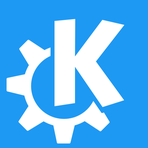KDE's New Moves: Donations and Calligra 4.0
September 1, 2024, 5:56 am
In the world of open-source software, KDE stands as a beacon of innovation. Recently, two significant developments have emerged from this vibrant community: the introduction of an annual donation request and the release of Calligra 4.0. Both initiatives aim to enhance user experience and secure the future of KDE projects.
At the end of August 2024, KDE Plasma developers unveiled a new feature: an annual pop-up notification requesting donations. This notification will appear once a year in December. It’s a strategic move to reach users who may not frequent KDE’s websites or social media channels. The goal? To broaden the financial support base for this beloved desktop environment.
The decision to integrate this notification into the KDE Plasma 6.2 codebase reflects a growing trend among successful open-source projects. Similar initiatives have proven effective for platforms like Thunderbird and Wikipedia, which have seen substantial increases in donations. The funds raised will be crucial. They aim to secure the employment of key KDE developers, allowing them to focus on their passion without the distraction of other income-generating projects.
The new donation request feature is not mandatory. Developers of various distributions can disable it if they choose. Users also have the option to turn off the notification through their settings. This flexibility respects user autonomy while still promoting the project’s financial needs.
Meanwhile, on August 27, 2024, KDE also launched Calligra 4.0, the latest iteration of its office suite. This software has evolved since its roots in KOffice, which was restructured in 2010. Calligra is built on KDE technologies and employs a unified system for embedded objects across its applications. This design allows for both lightweight mobile versions and full-featured desktop applications.
The release of Calligra 4.0 marks a significant upgrade. It transitions from KDE 5 and Qt 5 to the more modern Qt 6 and KDE Frameworks 6. This shift is not just about keeping up with technology; it’s about enhancing user experience. The user interface has undergone a redesign, particularly in key applications like Words, Sheets, and Stage. The new sidebar design aligns with the Breeze theme, creating a cohesive look across the suite.
Additionally, the toolbar has been optimized. Redundant functions, such as clipboard operations, have been removed to streamline user interaction. Settings dialogs now feature a flat design, consistent with the aesthetic of KDE System Settings and other Kirigami-based applications. This attention to detail enhances usability and visual appeal.
The launcher interface, which greets users upon opening the suite, has also been revamped. It now adopts a frameless style, offering a modern touch. Moreover, the webshape plugin has transitioned from the outdated QtWebkit to the more current QtWebEngine. This change allows users to embed web content seamlessly into their documents, spreadsheets, and presentations.
Calligra 4.0 is not just about aesthetics; it’s about functionality. The shift to Open Document Format (ODF) as the base format ensures compatibility and ease of use across different platforms. Soon, binary builds will be available for Linux, FreeBSD, macOS, and Windows, making Calligra accessible to a broader audience.
These developments reflect KDE’s commitment to innovation and community engagement. The annual donation request is a proactive step towards sustainability. It acknowledges the financial realities of maintaining and developing open-source software. By reaching out to users directly, KDE hopes to foster a culture of support and investment in its future.
On the other hand, the release of Calligra 4.0 showcases KDE’s dedication to providing high-quality software. The enhancements in user interface and functionality demonstrate a clear understanding of user needs. By leveraging modern technologies, KDE ensures that its applications remain relevant and competitive.
In a landscape where many software projects struggle for funding and user engagement, KDE’s dual approach stands out. The donation request is a call to action, inviting users to invest in the tools they rely on. Meanwhile, Calligra 4.0 serves as a testament to what can be achieved with community support and innovative thinking.
As we look ahead, the success of these initiatives will depend on user response. Will the community rally behind the donation request? Will Calligra 4.0 capture the hearts of users seeking a robust office suite? Only time will tell. But one thing is clear: KDE is not standing still. It’s moving forward, embracing change, and inviting its users to join the journey.
In the realm of open-source, KDE is a lighthouse. It guides users through the fog of software choices, offering tools that empower creativity and productivity. With each new feature and release, it strengthens its foundation, ensuring that the community continues to thrive. The future looks bright for KDE, and its users are at the heart of this evolution.
At the end of August 2024, KDE Plasma developers unveiled a new feature: an annual pop-up notification requesting donations. This notification will appear once a year in December. It’s a strategic move to reach users who may not frequent KDE’s websites or social media channels. The goal? To broaden the financial support base for this beloved desktop environment.
The decision to integrate this notification into the KDE Plasma 6.2 codebase reflects a growing trend among successful open-source projects. Similar initiatives have proven effective for platforms like Thunderbird and Wikipedia, which have seen substantial increases in donations. The funds raised will be crucial. They aim to secure the employment of key KDE developers, allowing them to focus on their passion without the distraction of other income-generating projects.
The new donation request feature is not mandatory. Developers of various distributions can disable it if they choose. Users also have the option to turn off the notification through their settings. This flexibility respects user autonomy while still promoting the project’s financial needs.
Meanwhile, on August 27, 2024, KDE also launched Calligra 4.0, the latest iteration of its office suite. This software has evolved since its roots in KOffice, which was restructured in 2010. Calligra is built on KDE technologies and employs a unified system for embedded objects across its applications. This design allows for both lightweight mobile versions and full-featured desktop applications.
The release of Calligra 4.0 marks a significant upgrade. It transitions from KDE 5 and Qt 5 to the more modern Qt 6 and KDE Frameworks 6. This shift is not just about keeping up with technology; it’s about enhancing user experience. The user interface has undergone a redesign, particularly in key applications like Words, Sheets, and Stage. The new sidebar design aligns with the Breeze theme, creating a cohesive look across the suite.
Additionally, the toolbar has been optimized. Redundant functions, such as clipboard operations, have been removed to streamline user interaction. Settings dialogs now feature a flat design, consistent with the aesthetic of KDE System Settings and other Kirigami-based applications. This attention to detail enhances usability and visual appeal.
The launcher interface, which greets users upon opening the suite, has also been revamped. It now adopts a frameless style, offering a modern touch. Moreover, the webshape plugin has transitioned from the outdated QtWebkit to the more current QtWebEngine. This change allows users to embed web content seamlessly into their documents, spreadsheets, and presentations.
Calligra 4.0 is not just about aesthetics; it’s about functionality. The shift to Open Document Format (ODF) as the base format ensures compatibility and ease of use across different platforms. Soon, binary builds will be available for Linux, FreeBSD, macOS, and Windows, making Calligra accessible to a broader audience.
These developments reflect KDE’s commitment to innovation and community engagement. The annual donation request is a proactive step towards sustainability. It acknowledges the financial realities of maintaining and developing open-source software. By reaching out to users directly, KDE hopes to foster a culture of support and investment in its future.
On the other hand, the release of Calligra 4.0 showcases KDE’s dedication to providing high-quality software. The enhancements in user interface and functionality demonstrate a clear understanding of user needs. By leveraging modern technologies, KDE ensures that its applications remain relevant and competitive.
In a landscape where many software projects struggle for funding and user engagement, KDE’s dual approach stands out. The donation request is a call to action, inviting users to invest in the tools they rely on. Meanwhile, Calligra 4.0 serves as a testament to what can be achieved with community support and innovative thinking.
As we look ahead, the success of these initiatives will depend on user response. Will the community rally behind the donation request? Will Calligra 4.0 capture the hearts of users seeking a robust office suite? Only time will tell. But one thing is clear: KDE is not standing still. It’s moving forward, embracing change, and inviting its users to join the journey.
In the realm of open-source, KDE is a lighthouse. It guides users through the fog of software choices, offering tools that empower creativity and productivity. With each new feature and release, it strengthens its foundation, ensuring that the community continues to thrive. The future looks bright for KDE, and its users are at the heart of this evolution.

